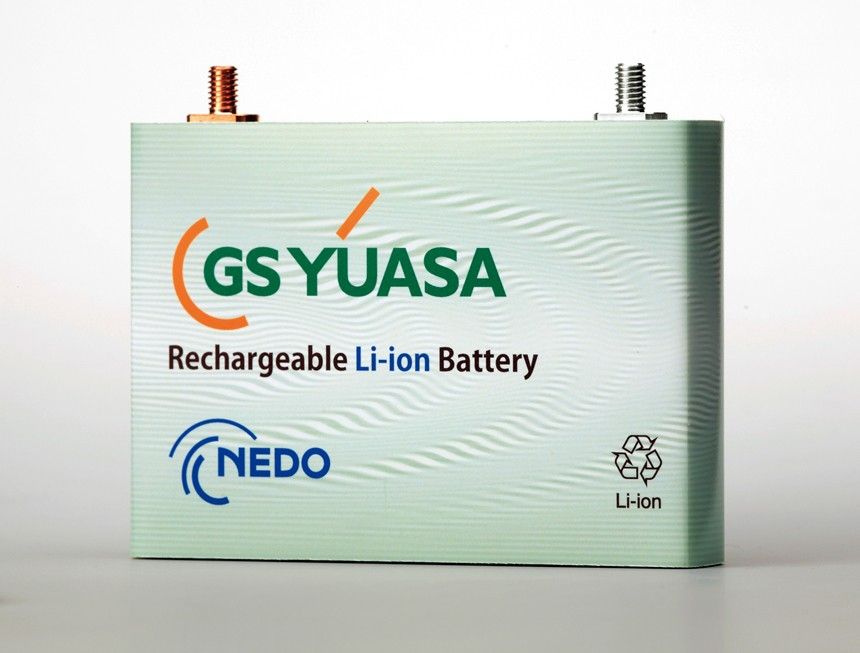Technology:
 The electrode of a
lithium-ion battery is generally a metal plate to which electrode materials are
applied. Thick application increases storage capacity, but it decreases output.
Professor of Tokyo Metropolitan University Kiyoshi Kanamura and Dainippon Screen jointly developed a technology to build an electrode that has a surface
with tiny irregularities with the help of the ink-jet technology. They sprayed
electrode materials on the metal plate and put in numerous irregularities, each
of which is 70 micrometers wide and 150 micrometers high. Using the new
technology, they built a lithium-ion battery with an electrode that is two
times as thick as the conventional model on trial. The storage capacity
doubled, but the output almost remained unchanged. That is supposedly because tiny
valleys between irregularities decreased electric resistance. The new
technology can be applied to various electrode materials without reducing their
durability. In addition, the existing production line of lithium-ion battery
can introduce the new technology with only a minor modification. (Photo: GS Yuasa's lithium-ion battery)
The electrode of a
lithium-ion battery is generally a metal plate to which electrode materials are
applied. Thick application increases storage capacity, but it decreases output.
Professor of Tokyo Metropolitan University Kiyoshi Kanamura and Dainippon Screen jointly developed a technology to build an electrode that has a surface
with tiny irregularities with the help of the ink-jet technology. They sprayed
electrode materials on the metal plate and put in numerous irregularities, each
of which is 70 micrometers wide and 150 micrometers high. Using the new
technology, they built a lithium-ion battery with an electrode that is two
times as thick as the conventional model on trial. The storage capacity
doubled, but the output almost remained unchanged. That is supposedly because tiny
valleys between irregularities decreased electric resistance. The new
technology can be applied to various electrode materials without reducing their
durability. In addition, the existing production line of lithium-ion battery
can introduce the new technology with only a minor modification. (Photo: GS Yuasa's lithium-ion battery)
Professor of Tokyo University of Agriculture and Technology Katsuhiko Naoi and Nippon Chemi-Con
jointly discovered that adding fine particles of nanometer size to electrode
materials increases the storage capacity. Each nano particle is five to several
tens of nanometers in diameter. They created these nanoparticles by reacting carbon
and a metal oxide under high pressure. Used as additives, they get into the
clearance between particles of electrode materials to increase the density,
subsequently the storage capacity increases. It has already been conformed that
adding nanoparticles to various kinds of electrode materials increases the
storage capacity by 25-30%. The existing production line of lithium-ion battery
can also introduce this new technology with only a minor modification. Nippon
Chemi-Con already started shipping samples.
The above two
technologies support the government’s plan to increase the travel distance per
charge of an EV by three times to 500 km by 2030. Japan currently has nearly 50%
share in the world market of materials and components for lithium-ion batteries.
The latest model of the lihium-ion battery
No comments:
Post a Comment